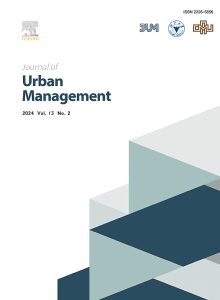The impact of urban sprawl on the urban-rural fringe of post-socialist cities in Central and Eastern Europe – Case study from Hungary
Gábor László Vasárus, Jenő Zsolt Farkas,
Edit Hoyk, András Donát Kovács
Journal of Urban Management – Available online 10 July 2024
Highlights
- Urban sprawl has a wide-ranging impact on cities in Central-East Europe.
- The sprawl has adverse effects on the built environment.
- Spatial fragmentation and illegal activities cause damage in the outskirts.
- Local governments are unable to control the urbanization processes
- Adverse spillover effects worsen the social factors as well.
Abstract
Urban sprawl has a wide-ranging impact on the urban-rural fringe of the post-socialist cities, which are the most dynamically changing areas of the countryside in the Central and Eastern European countries. Intensive construction activity and population growth can be seen in the outskirts. Due to the lack of local spatial planning and land-use management in these areas, the environment was severely damaged during sprawl.

Keywords: Urban sprawl, Suburbanization, Urban-rural fringe, Built environment, Post-socialist cities, Hungary



